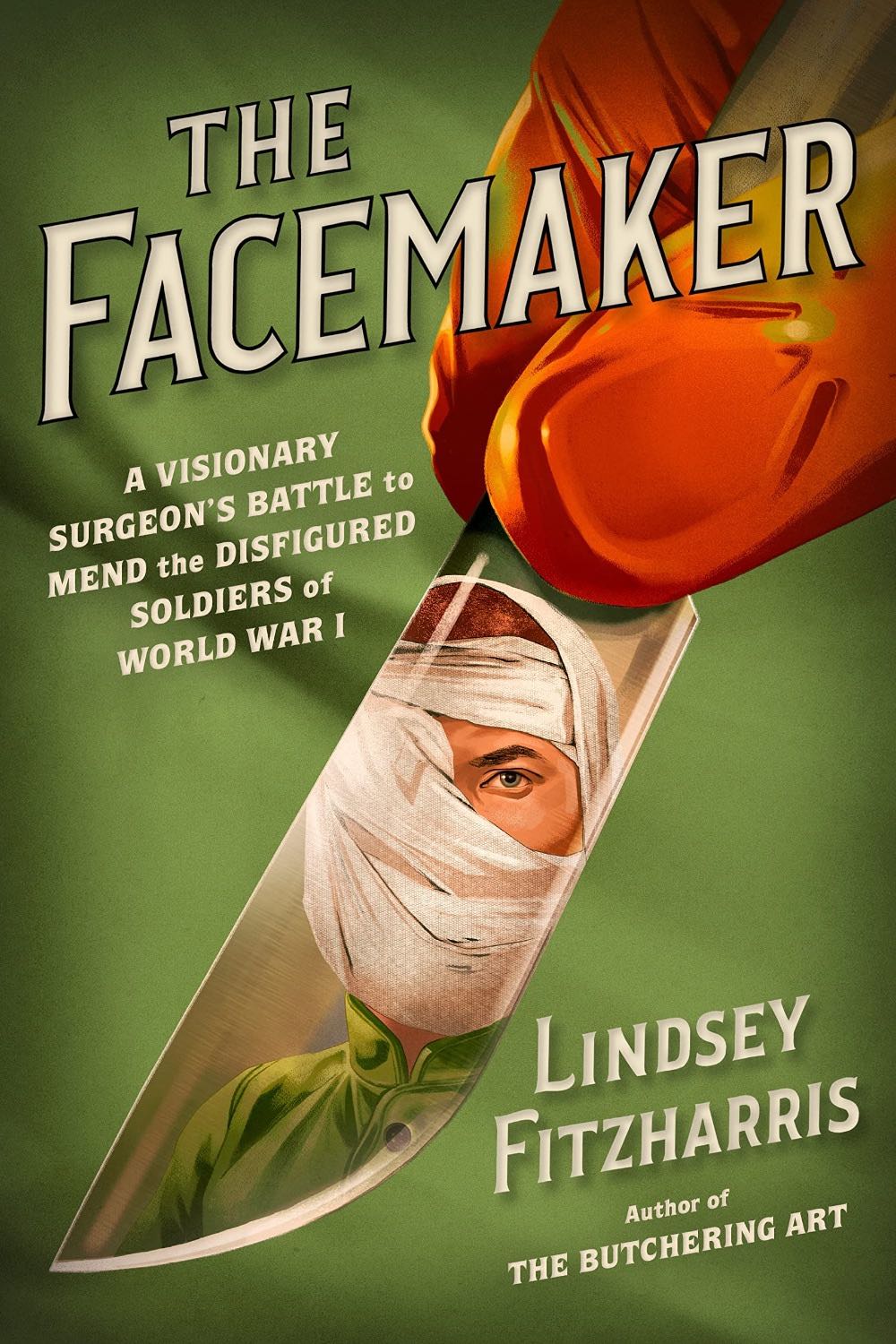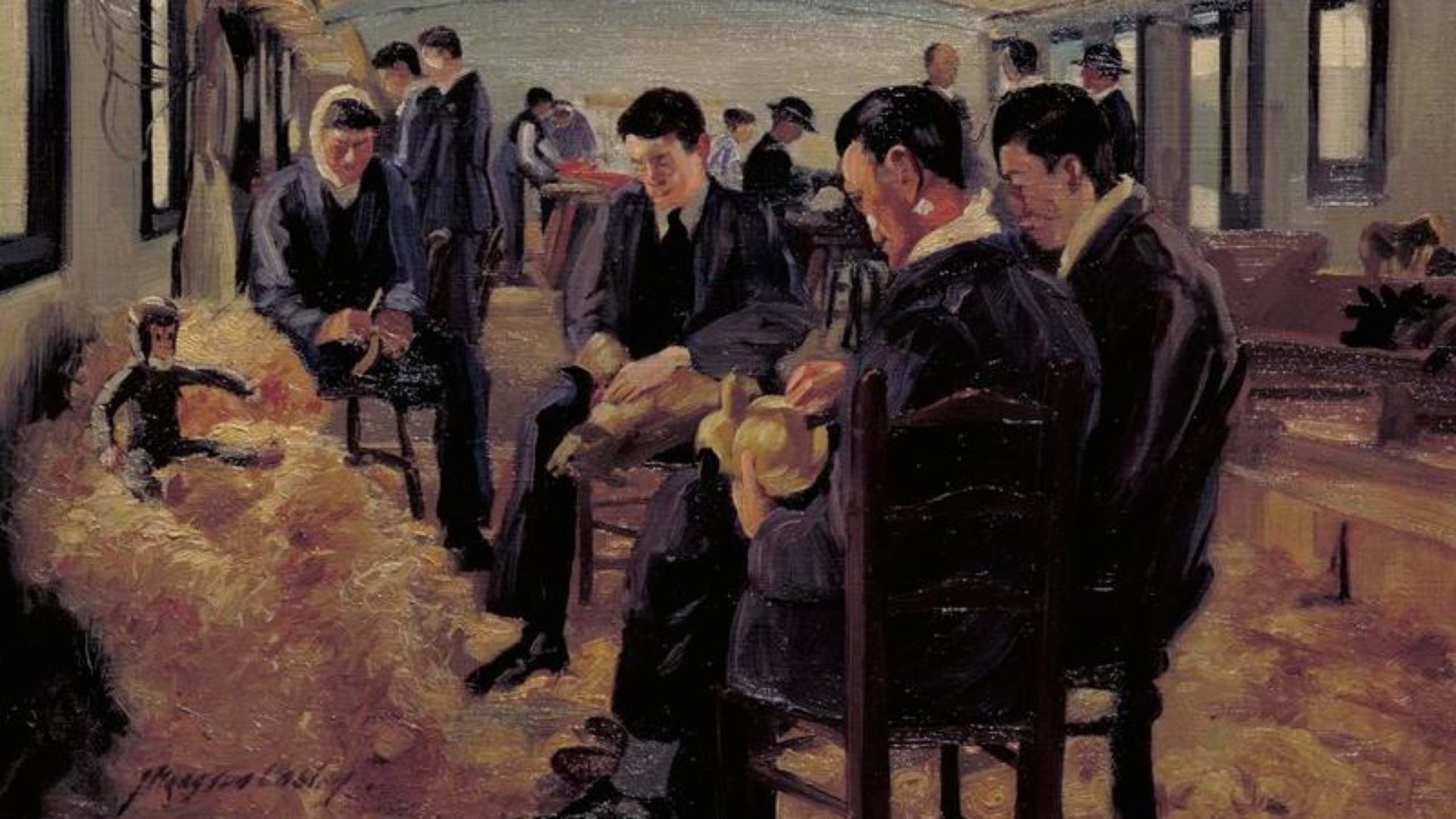In the wee hours of Nov. 20, 1917, a British army private named Percy Clare lay on a grassy hillside, awaiting a German attack that would begin at dawn. When an order came to drive toward a trench a few hundred yards away, Clare crept forward, staying low to the ground. Then, in an instant, a German bullet whistled past his ear and ripped through his face. It was so torn up that when he tried to scream, no sound came out of his mouth.
In “The Facemaker,” historian Lindsey Fitzharris explores how veterans like Clare coped once they left the battlefield — and how a few intrepid doctors resculpted their faces, inch by painstaking inch, until they felt human enough to rejoin the world. From period letters and memoirs, Fitzharris assembles a riveting portrait of Dr. Harold Gillies and his team at Britain’s Queen’s Hospital, who jump-started the field of reconstructive surgery while giving thousands of veterans a fighting chance at living a normal life.

BOOK REVIEW — “The Facemaker: A Visionary Surgeon’s Battle to Mend the Disfigured Soldiers of World War I,” by Lindsey Fitzharris (Farrar, Straus and Giroux; 336 pages).
Surgeons like Gillies knew facial reconstruction was far more than an aesthetic pursuit. For millennia, people’s identities have been bound up in how their faces appear, and in the post-Victorian era, severe facial wounds were considered a fate worse than death. In 1994, Lucy Grealy laid bare the deep psychic injury that disfigurement inflicts in her book “Autobiography of a Face.” “I was honing my self-consciousness into a torture device,” Grealy wrote after losing half her jaw as a child, “sharp and efficient enough to last me the rest of my life.”
Gillies’ aim, revolutionary in its time, was to spare his patients this sharp-pointed agony — and his goal was all the more audacious given what he was up against. When he signed up to serve with the British army in 1915, injuries on the war’s western front were mounting at a terrifying clip. On a daily basis, shrapnel and exploding ordinance severed tongues and blew noses to bits. When a gravely wounded soldier approached one volunteer nurse, “in the dim light, she thought the lower half of his face was covered by a black cloth,” Fitzharris writes. “Only later did she realize it had been completely blown off.”
Before World War I, attempts to repair wounds like these had been largely Frankensteinian. Though Civil War surgeons experimented with plastic surgery, the results were often disappointing, leaving soldiers with gaping facial holes. Gillies knew he had to raise the surgical bar as he watched devastated head-injury patients arrive at the French military hospital where he worked. In concert with other surgeons and dentists, he began tinkering with new bone repair and skin graft procedures. Eventually, Gillies talked his army bosses into letting him set up the Queen’s Hospital in Sidcup, England — the first medical center devoted to facial reconstruction.
Sidcup, as it was known, became a haven for facial injury patients considered lost causes elsewhere. Gillies pioneered a range of techniques at the hospital, including a method of rolling living tissue into what he called “tubed pedicles.” He could shift these tubes from other parts of the body to the face while keeping their vessel networks intact — a necessity due to the robust blood circulation face repairs required. Over the course of multiple procedures, Gillies brought destroyed faces closer to symmetry. He liked to assure new patients, “You’ll be all right and have as good a face as most of us.” With the results he was getting, more and more soldiers dared to believe him.
Under Gillies’ influence, Sidcup took on the feel of an artists’ salon, as portraitist Daryl Lindsay and sculptor Kathleen Scott documented cases from start to finish. “Harmony between the creative and medical disciplines,” Fitzharris writes, “was both unique and essential to the practice of plastic surgery.” The artists also had an incisive way of summing up the technicians’ foibles. “He was as full of ideas as a dog of fleas,” illustrator Gay Tydeman said of Gillies. “If they succeeded, they were magnificent. If they failed, it was on a heroic scale.”
Working at the bleeding edge of his field, Gillies indeed made his share of blunders. When he operated on a British pilot with facial burns, he planned an in-depth reconstruction that involved lifting a skin flap from the pilot’s chest and filling in the exposed area with donor skin. But the foreign skin wouldn’t take, and the pilot’s face and chest both became infected. After the pilot developed runaway abscesses and died, Gillies agonized over his decision to try such a complex procedure. “He blamed himself,” Fitzharris writes, “admitting that he felt his desire ‘to obtain a perfect result’ overrode his surgical judgment.”
Fitzharris, author of 2017’s “The Butchering Art,” an unflinching history of Victorian-era surgery, manages to create a propulsive page-turner from highly technical subject matter. Though she sometimes gets bogged down in digressions, like a lengthy account of what started World War I, the humanity with which she portrays each character makes her narrative soar. She drives home the personal impact of facial injury by weaving in the life story of a soldier, Percy Clare, ending each installment on a cliffhanger to engage readers — and viscerally conveying the relief Clare felt when he finally came to Sidcup. “I was so happy that first night in the comfortable cozy ward,” Clare wrote, “that in spite of my fatigue I couldn’t sleep a wink.”
Clare’s hopes for recovery came true when Sidcup doctors succeeded in loosening his locked jaw enough to repair gaping holes in his face. Yet his journey took an alarming turn when British commanders called him back to the front before his surgical series could be completed. Clare’s story is an apt metaphor for the state of plastic surgery a century ago: proceeding in fits and starts, with no clearly defined endpoint in sight.
Part of what makes Gillies a heroic figure, in Fitzharris’ telling, is that he recognized the chancy nature of his calling and learned to celebrate each patient’s healing as the restoration of an entire world. “I am looking so well,” one man wrote Gillies, “that people are beginning not to believe it when I tell them that I was nearly burnt to death.” By piecing patients’ shattered faces back together, Gillies gave them the impetus to reimagine their lives — an enduring legacy to which Fitzharris more than does justice.










